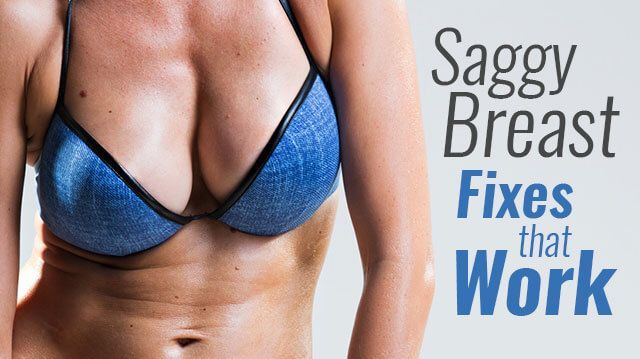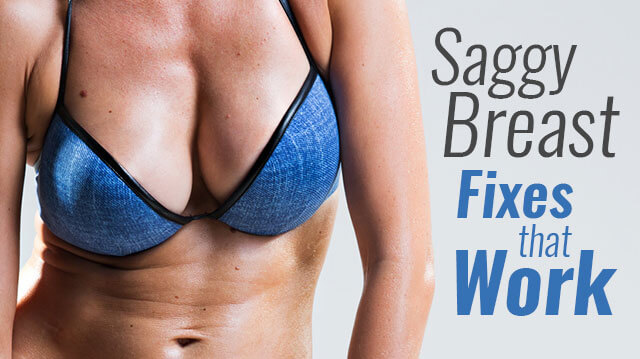
For many women, it’s an unavoidable fact of life. As we age, our bodies begin to lose their supple firmness, and our breasts are no exception. Saggy breasts are an unpleasant part of getting older, and they’re a topic few women want to discuss and even fewer attempt to do anything about.
As their breasts lose definition and begin to succumb to gravity, many women experience a significant loss of self-confidence. This loss can seriously impact their quality of life, making some women unwilling to expose their body, undermining their ability to be assertive, and generally just making life that much less enjoyable.
What causes saggy breasts?
Generally speaking, most women begin to experience a decline in their breast elasticity after the age of 40. This is not always the case, however, as various factors can work to speed up the process of sagging. These factors can include bras and pregnancy.
Contrary to what you might think, research suggests that bras are one of the major causes of saggy breasts, as they prevent the development of muscle tissues in the breasts. Data seems to indicate that breasts need to be exposed to gravity in order to encourage them to develop muscle mass, which in turn offers them natural support and keeps them firmer for longer. Exceptions to this rule do apply, of course, but it’s interesting food for thought.
Pregnancy is another common cause of premature breast sag, and is in fact caused by rapid weight gain during pregnancy, rather than through breastfeeding, as many people think. The rapid weight gain experienced during pregnancy stretches the breast tissue, and they often fail to return to their former shape and size postpartum.
Despite the seeming inevitability of saggy breasts, there are a number of things you can do to encourage your breasts to be firm and prevent sagginess.
Get plenty of exercise
Exercise is a vital part of preventing the development of sagging breasts. Regular exercise helps us to maintain a healthy weight and promotes healthy muscle mass and firm skin, which are important for maintaining firm breasts. Try to do weight-bearing exercises two to three times per week, with an emphasis on chest-related exercises. These exercises can significantly strengthen the muscles and ligaments around your pectorals and in turn can prevent the development of saggy breasts. Exercises such as push-ups, chest presses, and dumbbell flys can all be effective tools against breast sag.
 As always, however, moderation is key. Those who are overweight and begin a regime of exercising should ensure that they do not lose weight too quickly, as breasts can become flaccid and saggy from rapid tissue loss and the resultant excess skin.
As always, however, moderation is key. Those who are overweight and begin a regime of exercising should ensure that they do not lose weight too quickly, as breasts can become flaccid and saggy from rapid tissue loss and the resultant excess skin.
Stay hydrated
Breast skin cells are composed primarily of water. Becoming dehydrated can therefore negatively impact the skin, leading to wrinkles, reduction in skin softness, and hence the development of saggy breasts.
Massage regularly
Regularly massaging your breasts and the areas around your breasts can enhance the elasticity of your skin. Gently massage these areas three times a week, with the aid of a beneficial oil such as coconut oil or olive oil. Regular massage will help to stimulate blood flow to the surface of your breasts, encouraging cell repair and eliminating the effects of sagging.
Use essential oils
Essential oils, when used wisely, can be a potent weapon in the fight against saggy breasts. Incorporate essential oils such as carrot, spearmint, lemongrass or fennel seed into your massage routine to help improve cell repair and promote healthy skin elasticity.
Good nutrition is another important way of staving off saggy breasts. Find out which foods can help you keep things firm and supple.
—Liivi Hess
Liivi is an Integrative Nutrition Health Coach and is training to become a doula. She inspires women to find peace and personal power by taking control of health and fertility naturally. Liivi‘s passion is ancestral nutrition and primal lifestyle design. She and her partner Will live between Toronto, Canada and Queenstown, New Zealand.
Sources:
http://europepmc.org/abstract/med/20019639
http://www.sciencedirect.com/science/article/pii/S000712260300122X
http://onlinelibrary.wiley.com/doi/10.1111/j.1651-2227.2004.tb02935.x/abstract
http://biomedicaloptics.spiedigitallibrary.org/article.aspx?articleid=1101077

